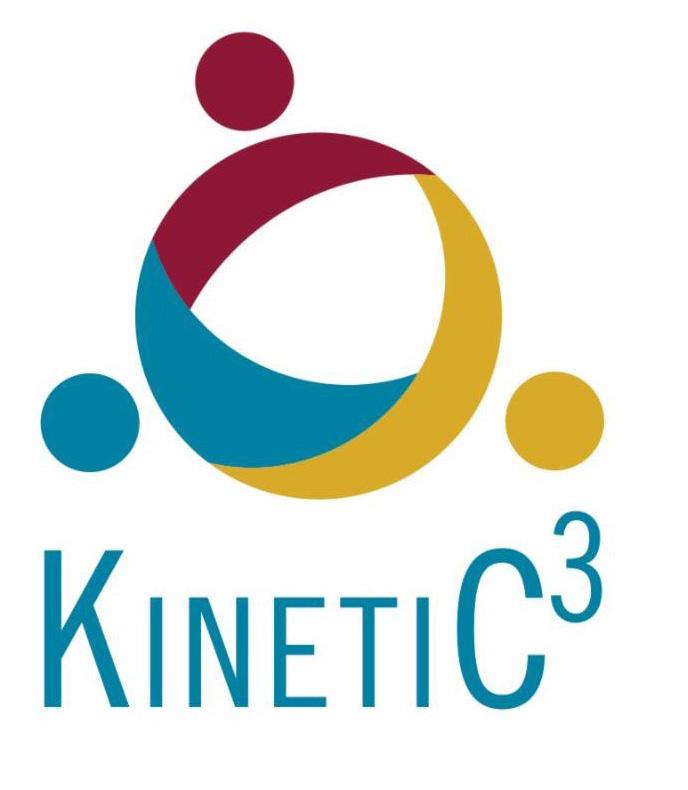
5 minute read
What Learners Tell Us About How They Know When They Matter
Caitlin Patten, MD
Assistant Professor, Section of Breast Surgery, Division of Surgical Oncology
Rana Higgins, MD
Assistant Professor, Division of Minimally Invasive Gastrointestinal Surgery
We have all been students at some point in our life. Do you remember a day when you were in a classroom, meeting, or clinical learning environment and wondered why you were there? Perhaps, no one acknowledged your presence or asked your name, or they dismissed what you said, or when you returned after a prolonged absence, no one realized you had been gone. These behaviors make you feel like you don’t matter. Knowing that you matter means that others’ behaviors, actions, and words make you feel valued and useful. They are aware of you, make you feel important by paying attention to and going out of their way for you, and rely on you. It turns out that mattering (the perception that you matter) is an enabling concept – when you feel you matter you have more selfesteem and self-efficacy which leads to less anxiety and depression, allowing you to learn more! Helping others matter is one way to improve the learning environment.
How do our learners perceive that they matter? A group of faculty participating in the 2019-2020 KINETIC3 faculty development program asked that question. While participating in this structured program, Dr. Rana Higgins and Dr. Caitlin Patten used qualitative methodology and semi-structured interviews to find out what M3 and M4 students on their surgery clerkship perceived as evidence that they matter.
Mattering focuses on three critical components: awareness, importance and reliance. All medical students interviewed needed to know that others were aware of them. Students felt they mattered when residents and faculty called them by name (yes, it is that simple!). They also felt they mattered by making eye contact and not having the resident or faculty use a phone while talking to them. Part of awareness is also finding out what makes each learner a unique individual – where they are from, their past experiences, and what their current interests and/or career goals are. Identifying learners’ interests and strengths were not only a way to be aware of them, but also made them feel important.
Importance was highlighted when medical students
Karen Marcdante, MD
Professor, Department of Pediatrics and Critical Care
Erin Strong, MD, MPH
General Surgery Research Resident
were assigned meaningful tasks - making them a valued member of the team. When students perceived their educators relied solely on them to complete an assigned task that was essential to the success of the team, they had a strong sense of mattering. Additionally, learners felt important when those supervising them (residents/faculty) “went out of their way” to see how they were doing, asked about one of their projects, or performed an impromptu mini education session. The third component of mattering is reliance. For medical students this occurred when they were trusted to collect information that was needed and not duplicated by another team member.
This is the first work of its kind with learners in medical education. It is critical for us all to recognize which words, actions and behaviors make learners feel they matter, allowing them to be more curious, comfortable, and creative. It is essential to understand that mattering requires building a relationship. Educators and students alike all want to matter. If a learner has a sense of mattering, they will be more engaged with learning and with their educators. In turn, educators will feel their time spent with students was worthwhile and they will be more motivated to teach. Moving forward, remember how it felt when you did not matter as a learner and how easily you can prevent others from feeling that same way through awareness, importance, and reliance.

FOR ADDITIONAL INFORMATION on this topic, visit mcw.edu/surgery or contact Dr. Rana Higgins at rhiggins@mcw.edu.
REFERENCES FROM PAGE 14 Right Ventricular Assist Device and Extracorporeal...
1. Wu C, Chen X, Cai Y, et al. Risk Factors Associated
With Acute Respiratory Distress Syndrome and
Death in Patients With Coronavirus Disease 2019
Pneumonia in Wuhan, China. JAMA Internal Medicine 2020;180(7):934-43 doi: 10.1001/jamainternmed.202 0.0994published Online First: Epub Date]|. 2. Yang X, Yu Y, Xu J, et al. Clinical course and outcomes of critically ill patients with SARS-CoV-2 pneumonia in Wuhan, China: a single-centered, retrospective, observational study. Lancet Respir Med 2020;8(5):47581 doi: 10.1016/s2213-2600(20)30079-5published
Online First: Epub Date]|. 3. Zhou F, Yu T, Du R, et al. Clinical course and risk factors for mortality of adult inpatients with COVID-19 in
Wuhan, China: a retrospective cohort study. Lancet 2020;395(10229):1054-62 doi: 10.1016/s01406736(20)30566-3published Online First: Epub Date]|. 4. Ventilation with Lower Tidal Volumes as Compared with Traditional Tidal Volumes for Acute Lung Injury and the Acute Respiratory Distress Syndrome. New
England Journal of Medicine 2000;342(18):1301-08 doi: 10.1056/nejm200005043421801published Online
First: Epub Date]|. 5. Thompson AE, Ranard BL, Wei Y, Jelic S. Prone
Positioning in Awake, Nonintubated Patients With
COVID-19 Hypoxemic Respiratory Failure. JAMA
Internal Medicine 2020 doi: 10.1001/jamainternmed. 2020.3030published Online First: Epub Date]|. 6. Davies A, Jones D, Bailey M, et al. Extracorporeal
Membrane Oxygenation for 2009 Influenza
A(H1N1) Acute Respiratory Distress Syndrome.
Jama 2009;302(17):1888-95 doi: 10.1001/ jama.2009.1535published Online First: Epub Date]|. 7. Alshahrani MS, Sindi A, Alshamsi F, et al. Extracorporeal membrane oxygenation for severe Middle East respiratory syndrome coronavirus. Ann Intensive Care 2018;8(1):3 doi: 10.1186/s13613-017-0350-xpublished
Online First: Epub Date]|. 8. Argulian E, Sud K, Vogel B, et al. Right Ventricular
Dilation in Hospitalized Patients with COVID-19
Infection. JACC Cardiovasc Imaging 2020 doi: 10.1016/j. jcmg.2020.05.010published Online First: Epub Date]|. 9. Zeng JH, Liu YX, Yuan J, et al. First case of COVID-19 complicated with fulminant myocarditis: a case report and insights. Infection 2020:1-5 doi: 10.1007/s15010020-01424-5published Online First: Epub Date]|. 10.Tavazzi G, Pellegrini C, Maurelli M, et al. Myocardial localization of coronavirus in COVID-19 cardiogenic shock. Eur J Heart Fail 2020;22(5):911-15 doi: 10.1002/ ejhf.1828published Online First: Epub Date]|. 11.Inciardi RM, Lupi L, Zaccone G, et al. Cardiac
Involvement in a Patient With Coronavirus Disease 2019 (COVID-19). JAMA Cardiol 2020;5(7):1-6 doi: 10.1001/jamacardio.2020.1096published Online First:
Epub Date]|. 12.Badu B, Cain MT, Durham LA, 3rd, et al. A Dual-Lumen
Percutaneous Cannula for Managing Refractory
Right Ventricular Failure. Asaio j 2019 doi: 10.1097/ mat.0000000000001099published Online First: Epub
Date]|. 13.Mustafa AK, Alexander PJ, Joshi DJ, et al. Extracorporeal
Membrane Oxygenation for Patients With COVID-19 in Severe Respiratory Failure. JAMA Surgery 2020 doi: 10.1001/jamasurg.2020.3950published Online First:
Epub Date]|.
To refer a patient or request a transfer/consultation, please use the references below:
ADULT PATIENTS
All Non-cancer Requests Referrals: 800-272-3666 Transfers/Consultations: 877-804-4700 mcw.edu/surgery Clinical Cancer Center Referrals: 866-680-0505 Transfers/Consultations: 877-804-4700

PEDIATRIC PATIENTS
Referrals/Transfers/ Consultations: 800-266-0366 Acute Care Surgery: 414-266-7858


